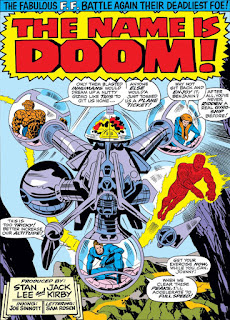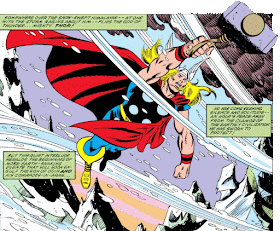Sometime around early 1971 I remember walking into a small local bookstore that sold books and magazines, but in used condition--mostly a place where people traded in their old periodicals for some minor compensation. I was just starting to become interested in comic books, and it hadn't taken me long to reach the point where I began looking around for back issues of the books I'd been reading--so this store seemed like it might ideal for that purpose if their stock included comics, which it did. This particular store really didn't get much business, so most of the time there were large stacks of magazines and comic books waiting to be looked through--a virtual treasure trove for a kid who had been recently bitten by the collecting bug. Most of those back issues were in good to very good condition, though I wasn't yet thinking about things like grading or even bagging--it was enough to just find a fresh stack of books that would add to my stash and allow me to read backward and get a little more comics lore under my belt. A good thing, too, since the store owner had a habit of literally marking down his merchandise for resale, taking a marker right to the cover of the book or magazine--and just for good measure, stamping the store's name and address there, as well (free advertising, I suppose). A practice that today would have me wincing in visible mock pain.
 One of the books that turned up in this store happened to be Fantastic Four #84, which began a four-issue arc that featured Doctor Doom in what would turn out to be the last Lee/Kirby/Sinnott story we would ever see the character appear in (if you're not counting his android stand-in from FF #100, that is). At this point I was reading the mag regularly, but I was more familiar with the book's then-current artists--John Romita and, following him, John Buscema--and was only still in the beginning stages of being exposed to Jack Kirby's artwork as I worked my way back. Believe it or not, I was finding Kirby's work on the book to be an acquired taste that was taking some getting used to; but then, I'd find myself approaching the work of Ditko, Severin, et al. in much the same way before becoming more appreciative of their styles. (Admittedly, I only warmed slightly to Severin and Don Heck, even though the latter's work seemed to be everywhere in the older stories I would discover.)
One of the books that turned up in this store happened to be Fantastic Four #84, which began a four-issue arc that featured Doctor Doom in what would turn out to be the last Lee/Kirby/Sinnott story we would ever see the character appear in (if you're not counting his android stand-in from FF #100, that is). At this point I was reading the mag regularly, but I was more familiar with the book's then-current artists--John Romita and, following him, John Buscema--and was only still in the beginning stages of being exposed to Jack Kirby's artwork as I worked my way back. Believe it or not, I was finding Kirby's work on the book to be an acquired taste that was taking some getting used to; but then, I'd find myself approaching the work of Ditko, Severin, et al. in much the same way before becoming more appreciative of their styles. (Admittedly, I only warmed slightly to Severin and Don Heck, even though the latter's work seemed to be everywhere in the older stories I would discover.)In about a year and a half after FF 84 saw publication, Kirby would announce his resignation from Marvel--which in a way sheds new light on this story, given how masterfully Kirby and Lee had transformed Doom over time into one of the FF's... one of Marvel's... most memorable and anticipated nemeses in the company's roster. This story isn't my favorite Doom tale--but it's a fine farewell to the character from his creator, so much so that Doom arguably has the lion's share of scenes while virtually elbowing aside the title characters. And you'll find abundant examples here of Lee's robust dialog for Doom, a sort of final tour de force with one of his most dynamic characters--leaving no doubt that if there's anyone who can chew the scenery, it's Doctor Doom.
This initial issue of the four-part story mostly (if not entirely) consists of build-up, and in that it does its job well, thanks to Kirby packing it with a variety of interesting visuals which demonstrate this artist's proficiency at pacing a story and moving it along while taking into account the events to come. To start things off, that means catching up with the FF as they return from their last adventure in the land of the Inhumans--traveling in yet another incomprehensible vehicle that's seemingly designed with the sole purpose of making us want one of our own.
It naturally doesn't take the Fantastic Four long to run into the unexpected, which in this case takes the form of fighter jets from S.H.I.E.L.D. And the very recognizable pilot and co-pilot in one of those planes appear to be in urgent need to meet with the FF.
Elsewhere, in a small European country, a man on the run frantically attempts to win his freedom. But despite the precautions he's taken--the knowledge he has of his escape route--he cannot evade the one who lies in wait for him. The one who continues to boast of a benevolent nature that doesn't exist.
And so in just a few pages, the key players of this drama have all been assembled (with the exception of one, but that person's role in the story will become apparent much later). We know that the Fantastic Four will in some way be engaged in conflict with Doom again, but why? And aside from his usual stance of holding his kingdom and his subjects in an iron grip, what new plot is Doom involved with that has the likes of SHIELD on edge?
(Maybe he just wants to get his hands on the FF's awesome new airship?)






















































